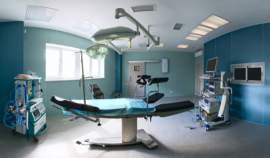
Workplace Health Safety and Welfare Regulations 1992

In order to diminish the workplace hazards regularly faced by employees in all sectors, the United Kingdom instated the Workplace Health Safety and Welfare Regulations 1992. This legislation established minimum safety requirements, which must be upheld in most work environments.
These regulations increased the number of safety precautions that employers were required to initiate in their facilities. Following the implementation of the Workplace Health Safety and Welfare Regulations 1992, all employers were required to accommodate all health and safety standards detailed in the legislation.
If an employer fails to adhere to these regulations, it is a crime that can be punished by issuing an extensive fine. If an employee is injured due to such negligence, the consequences can be more severe for the employer.
The Workplace Health Safety and Welfare Regulations 1992 created many new specifications for employers to following. For example, legally, an employer is now required to maintain the work facility and ensure that the structure poses no threat to employees. A work environment must possess suitable ventilation and the temperature within must be reasonable at all times. Adequate lighting must be provided, along with emergency lighting.
A facility must remain clean and uncluttered. Appropriate work space must be provided for employees. The legislation requires work environments to provide moving walkways and escalators. Drinking water must be made available to employees and there must be a suitable location for them to consume their meals, when relevant.
All transparent glass, including windows and doors, must be easily visible. These safety precautions are intended to reduce the incidence of work related injuries.



















